SIGINT software ecosystems: making applied signal intelligence work
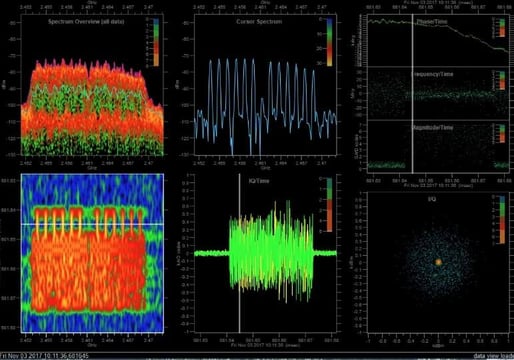
"Talent wins games, but teamwork and intelligence win championships." – Michael Jordan
Teamwork and intelligence are key to any successful SIGINT operation. But in today’s contested spectrum environment, they are vital.
Operators must have the best sensors and software to detect, capture, decode, decrypt, and process various signals—from military agile frequency hoppers to digital professional mobile radio protocols (e.g., DMR, P25, TETRA). The right RF sensor-software combination must be tailored for each unique operational environment and consider the target signals of interest, the terrain, and the placement and access of the operator.
Modern SIGINT requires agile support due to the constantly evolving nature of modern communication technologies and the vast amounts of data generated by them. To help provide the right support, raw data must be accessible in several formats for profound use by analysts. For this reason, CRFS enables the capture, recording, and streaming of VITA 49 RF I/Q data straight into world-class decoding and demodulation software made by companies such as Decodio and Procitec.
In some situations, signals are unknown communication waveforms within a Procitec or Decodio library (such as RADAR). In this case, wide-frequency forensic signal analysis software like CRFS’ RFeye DeepView allows operators to easily classify and characterize all unknown signals within the battlespace.
The following sections explore key points for SIGINT operators and program managers wanting to build custom software ecosystems from high-quality CRFS I/Q data streaming and capture.
The I/Q collection source matters
The quality of I/Q data received by decoding software matters, as it affects how much it can demodulate and decode. Therefore, having the most sensitive and deployable RF receiver feeding the ecosystem is critical. In terms of operation, before streaming the I/Q, a SIGINT operator conducts a proper spectrum search using the Node’s fast scan rate (Sweep speed at 61 kHz, RBW 320 GHz/s typical) at 100MHz bandwidth and with a sensitive tuning resolution of 1 Hz.
The Node’s high dynamic range also allows for the detection of LPI/LPD signals that lurk around the noise floor. Once the target signals are discovered, the data can be collected. All RFeye Nodes and Arrays collect and stream a minimum of 12.5MHz bandwidth of I/Q data within a range of 9kHz to 40GHz in VITA-49 format. CRFS’ newer offering, the RFeye SenS Remote increases the Node’s I/Q streaming to 100MHz through a fiber connection from a Node.
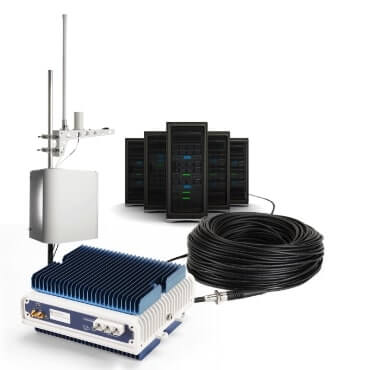
All RFeye Node and Array deployment options ensure terrain and buildings are not barriers to I/Q capture. Moreover, CRFS offers specialized options: the RFeye SenS Remote can help if you need long-term fixed monitoring for border security. The RFeye Stormcase or RFeye SenS Portable is perfect for short-term expeditionary capture, and there are custom mobile spectrum monitoring options for a vehicle solution or drone mounted (including tethered).
Dig Deeper through decoding
After collection, I/Q data streams directly into a decoding software like Procitec go2MONITOR or Decodio RED. Here, digitally modulated signals are demodulated and decoded to uncover not only header data (such as country codes and user IDs) but also unencrypted payload information (often voice and data messages). Encrypted networks, such as police and military TETRA or P25 phase II, remain safe from standard decoding. The decryption of signals would be the last step in the SIGINT operation, which requires the user to obtain the encryption key—normally obtained through other intelligence-gathering methods and tradecraft.
Procitec and Decodio’s websites contain a full and updated list of current decoded protocols.
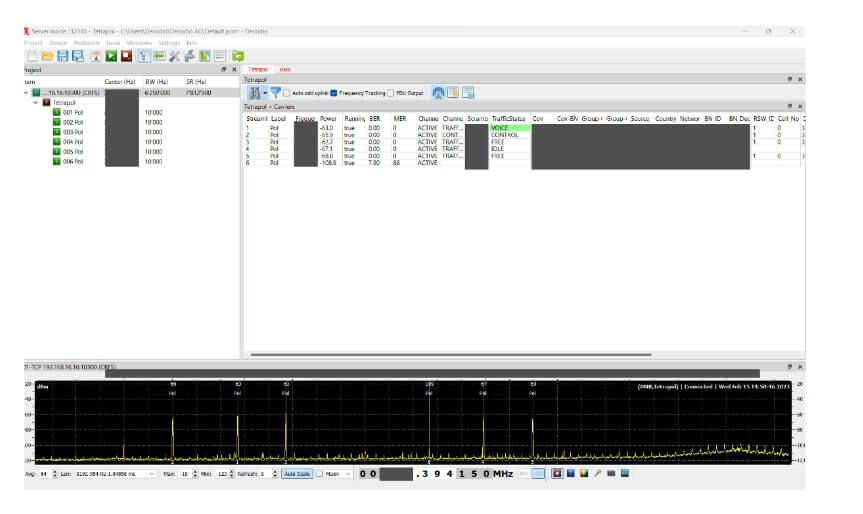 TETRAPOL decoding inside Decodio RED Software from an RFeye Node IQ stream.
TETRAPOL decoding inside Decodio RED Software from an RFeye Node IQ stream.
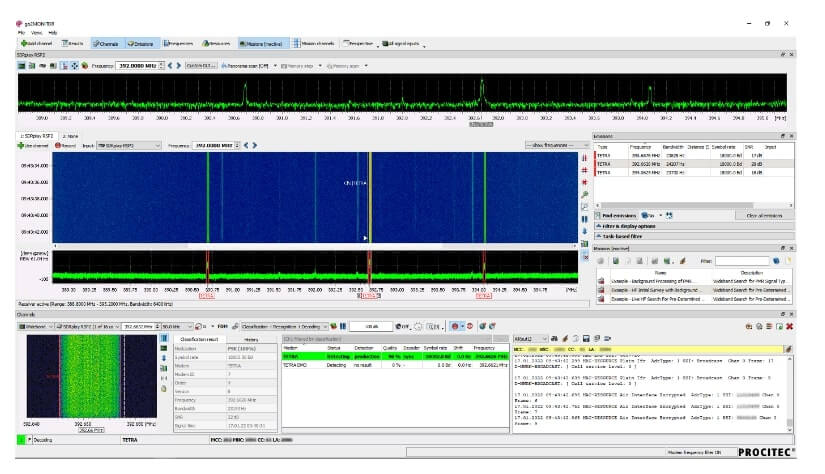
TETRA decoding inside PROCITEC go2MONITOR software from an RFeye Node IQ stream.
Analyzing unknown signals on the front lines
Decodio and Procitec software focuses primarily on the COMINT subcategory of SIGINT. However, what happens when RADAR or other ELINT-type signals need to be analyzed?
In this context, CRFS’ RFeye DeepView software adds to the SIGINT ecosystem by enabling a forensic signal analysis on unknown I/Q data from 9kHz to 40GHz. Running on a standard Windows PC/laptop, RFeye DeepView allows operators to easily view and dissect complex signals, such as RADAR and advanced frequency hopping communications. Here, SIGINT operators quickly isolate signal parameters, cut and slice, and export data in various formats.
RFeye DeepView exportable I/Q data formats
- RFIQ
- XDAT
- NCP (CRFS proprietary protocol)
- SigMF Recording
- VITA49.0 (*.vrt)
- VITA49.0 (*.vita49)
- CSV
- H5
- HDF5
- SIC
- WavE
- Enriched Wav
CRFS brings the analytical capability of a national intelligence center to the frontlines—decision-makers have robust SIGINT capability right where they need it.
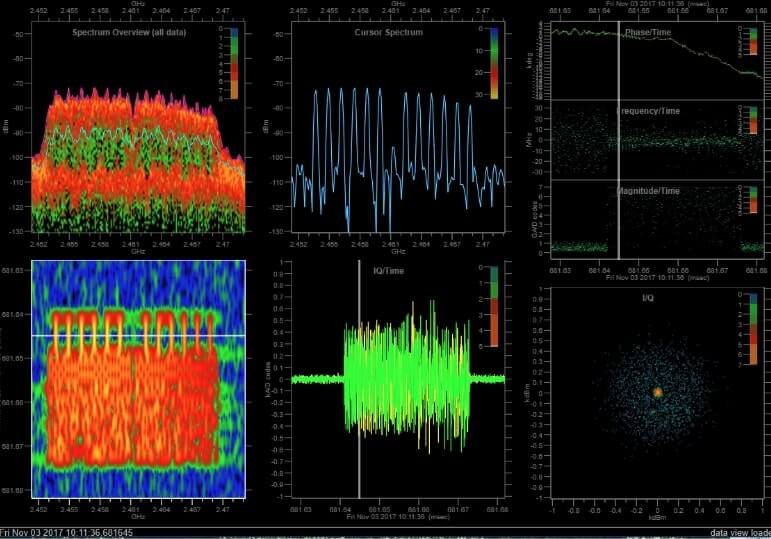
Analysis of a Wifi I/Q signal in CRFS DeepView Software
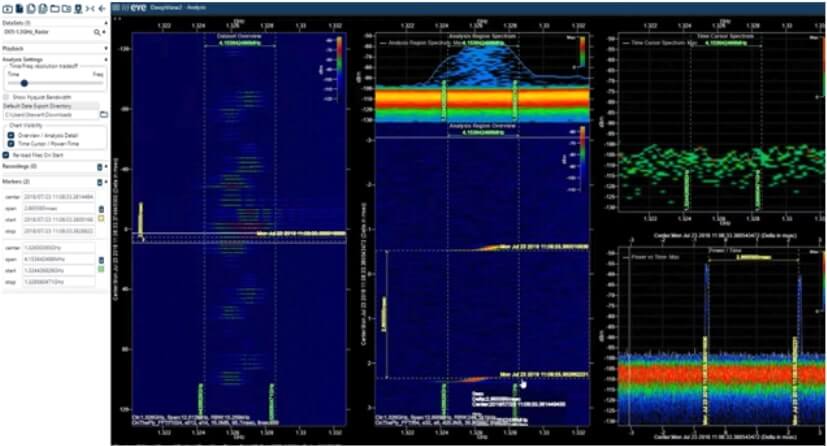
RADAR pulse duration measurement in CRFS RFeye DeepView Software
Building your custom SIGINT software ecosystem
From high-quality signal capture to decoding known protocols to analyzing new ones—having a robust SIGINT software ecosystem has never been more important.
Gone are the days of a “one size fits all” SIGINT system; unique operational environments demand unique solutions. For example, one unit might require a strong focus on enemy PMR networks through Decodio RED/DeepView analysis suite, while another might need military signal decoding, making a Procitec go2MONITOR/DeepView combination a better fit. Yet another unit might need a different classified software, which easily intakes high-quality VITA-49 I/Q data or industry standard data files (e.g., WavE, XDAT, HDF5) sliced from RFeye DeepView.
There are multiple possibilities with the CRFS SIGINT software ecosystem, making it the best on the market. It is trusted by global SIGINT operators working 24/7.
Zac George
Zac George is the International Business Development Manager for CRFS. He is a former naval Electronic Warfare officer and also has experience in digital decoding. He speaks regularly on EW and spectrum topics globally, and lives in Switzerland.

